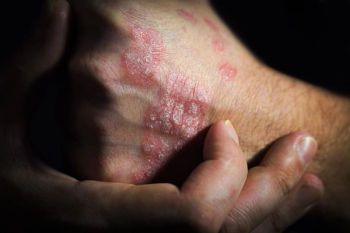
CRS With Nasal Polyps Linked With Reduced Health-Related QOL Across Patient Subgroups
Reduced health-related quality of life was identified in patients with chronic rhinosinusitis with nasal polyps compared with the general population—regardless of previous sinus surgery or presence of comorbidities.
Reduced health-related quality of life (HRQOL) was identified in patients with chronic rhinosinusitis with
As a chronic, predominantly type 2-mediated inflammatory disease of the nasal cavity and paranasal sinuses, researchers noted that CRSwNP is associated with a high symptom burden and a significant impact on HRQOL, which includes mental and physical health, and overall health status.
Prior research has
“The impact of comorbidities and nasal polyp surgery on HRQOL in patients with severe CRSwNP is not yet well understood,” noted researchers.
They conducted a post hoc analysis of the the phase 3 SINUS-24 (
Baseline data for the dupilumab and placebo groups were pooled to compare physical and mental HRQOL, measured using the 36-Item Short-Form (SF-36) Physical Component Score (PCS) and Mental Component Score (MCS), and overall health status, measured using the EuroQol-5 Dimensions visual analogue scale (EQ-5D VAS).
Participants were grouped by prior surgery, SCS use (within the last 2 years and with/without prior surgery), and comorbid asthma or non-steroidal anti-inflammatory drug-exacerbated respiratory disease (NSAID-ERD).
“To contextualize HRQOL burden in patients with severe CRSwNP, SF-36 PCS and MCS, and EQ-VAS scores at baseline from SINUS-24 were described and compared with scores for rheumatoid arthritis, type 2 diabetes, and asthma from previously published studies,” they added. “Population norm scores (US) were 50 for SF-36 and 72 for EQ-5D VAS.”
Overall, 276 patients (mean [SD] age, 50.5 years [13.4] years; 57.2% male) were included in the intention-to-treat (ITT) population, of whom 71.7% had prior ESS, 26.4% had prior SCS with no ESS, 38.4% had prior SCS and ESS, and 58.3% and 30.4%, respectively, had comorbid asthma and NSAID-ERD.
Findings indicated that mean baseline SF-36 PCS and MCS, and EQ-5D VAS scores among the overall ITT population were below population norms (46.40, 48.58, and 66.00, respectively). In subgroup stratifications based on baseline comorbidity (asthma or NSAID-ERD) or previous treatment (surgery and/or prior SCS use), mean baseline SF-36 PCS and EQ-5D VAS scores were also below population norms.
Patients without prior surgery (50.00) and with prior SCS use without surgery (50.04) were the only subgroups of the ITT population that showed mean baseline SF-36 MCS scores that met population norms.
Researchers concluded that the study findings suggest the high burden of disease in severe CRSwNP is not limited to patient subgroups with comorbidities or prior nasal polyps surgery.
“Self-reported general health status in patients with severe CRSwNP was worse than in other chronic conditions; physical and mental HRQOL burden was generally similar to other chronic conditions," they said.
Reference
Maspero JF, Philpott C, Hellings PW, et al. Health-related quality of life impairment among patients with severe chronic rhinosinusitis with nasal polyps in the SINUS-24 trial. Presented at the 2022 AMCP annual meeting. https://bit.ly/3xks2O7.
Newsletter
Stay ahead of policy, cost, and value—subscribe to AJMC for expert insights at the intersection of clinical care and health economics.












































